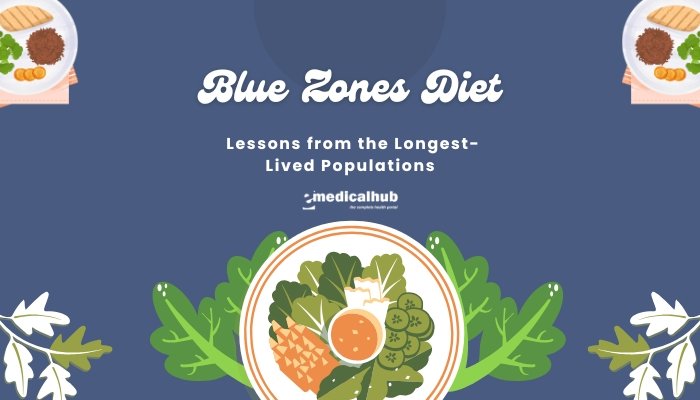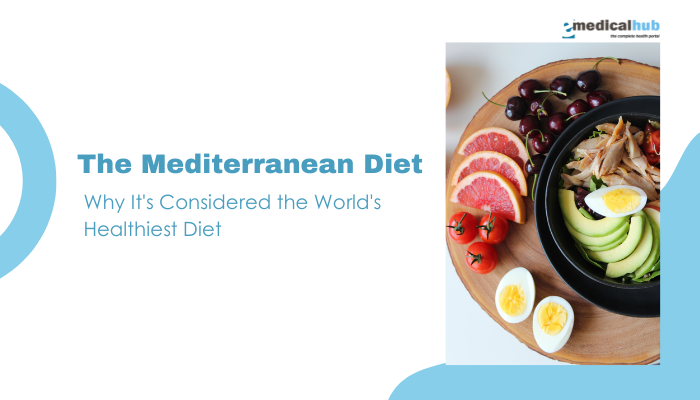Introduction
Why do some regions of the world boast a significantly higher concentration of centenarians—people who live to 100 and beyond—while others do not? This question propelled researcher and explorer Dan Buettner to identify “Blue Zones,” areas where people on average live longer, healthier lives.
These zones include places like Okinawa (Japan), Ikaria (Greece), Sardinia (Italy), Nicoya (Costa Rica), and the Seventh-day Adventist community in Loma Linda (California). Though each region has its own cultural nuances, they share notable lifestyle and dietary patterns that might help explain their impressive longevity.
A common theme across these varied cultures is a largely plant-centric diet, coupled with consistent physical activity and strong social networks. While genetic factors play a role in longevity, the “Blue Zones Diet” highlights how daily habits—especially food choices—can profoundly influence health and lifespan. This article explores the key dietary lessons from these regions, examines how they might support healthy aging, and offers practical tips for anyone looking to adopt a Blue Zones–inspired approach to eating.
Disclaimer: This guide is for general information and does not substitute personalized medical or nutritional advice. If you have specific health conditions, consult healthcare professionals before adopting major dietary changes.
What Are the Blue Zones?
Defining Blue Zones
The term “Blue Zones” was coined when Buettner, alongside demographers and local researchers, identified pockets of the globe with exceptionally high rates of longevity and low incidence of chronic diseases. They documented daily habits—nutrition, community engagement, stress management, and mild regular exercise—that correlate with extended lifespans. The five widely recognized Blue Zones are:
- Ikaria, Greece: A Greek island in the Aegean Sea, with a tradition of a Mediterranean diet, herbal teas, and afternoon naps.
- Okinawa, Japan: Known for a nutrient-dense, mostly plant-based diet, strong social bonds, and a concept of “ikigai” (purpose in life).
- Sardinia, Italy (particularly the mountainous Nuoro province): Home to many male centenarians, featuring a pastoral lifestyle and simple meals.
- Nicoya Peninsula, Costa Rica: Renowned for “plan de vida” (life purpose), high intake of beans and tortillas, and physically active daily routines.
- Loma Linda, California, USA: A community of Seventh-day Adventists practicing a mostly vegetarian diet, regular rest on the Sabbath, and strong spiritual involvement.
Common Lifestyle Traits
Though cultures vary widely, shared threads among the Blue Zones often include:
- Primary reliance on whole plant foods: Legumes, vegetables, fruits, whole grains, and moderate nuts/seeds.
- Regular, moderate physical activity: Walking, farming, or daily functional movements rather than intense gym sessions.
- Close-knit communities: Strong sense of belonging, communal support, and healthy social networks.
- Limited processed foods and minimal refined sugars.
- Portion mindfulness: e.g., Okinawa’s “Hara Hachi Bu”—stop eating when ~80% full.
Key Components of the Blue Zones Diet
Emphasis on Plants
Legumes (beans, lentils) form a major protein source in many Blue Zones. For instance:
- Okinawa: Sweet potatoes, tofu, green leafy vegetables, and soy-based foods.
- Sardinia: Fava beans, chickpeas, and vegetables are staples, with limited meat (mostly on special occasions).
- Nicoya: The “three sisters” of beans, corn, and squash, combined with fresh produce.
By centering meals around plants, individuals naturally consume higher fiber, antioxidants, and essential minerals while typically reducing saturated fats and overall calorie density.
Whole Grains Over Refined
White bread, refined pasta, and processed grains are less common in these communities (especially historically). Instead, they use:
- Sourdough bread in Sardinia, often from locally milled whole wheat.
- Brown rice or minimal polished rice in some areas of Okinawa.
- Corn tortillas from freshly ground masa in Nicoya.
Whole grains supply B vitamins, fiber, and help stabilize blood sugar.
Modest Animal Protein
Contrary to high-protein modern diets, Blue Zones typically rely on small fish, eggs, or goat’s/sheep’s milk in moderate amounts. Meat is often a side dish or occasional treat, not a centerpiece of daily meals. For example, Sardinians historically eat more goat’s or sheep’s cheese than large portions of meat, while Okinawans use fish as a small portion.
Healthy Fats
- Olive Oil: A staple in Ikaria and Sardinia, used in cooking or dressings.
- Avocado: In Nicoya, it’s a frequent addition for monounsaturated fats.
- Nuts: Almonds, walnuts, or peanuts serve as snacks, aiding heart health.
These plant-based or minimally processed fats are high in antioxidants and supportive of good cholesterol profiles.
Moderate Alcohol (or None)
Some Blue Zones incorporate moderate alcohol, particularly red wine in Sardinia or homemade Ikarian wine, while Loma Linda Adventists often abstain. Where alcohol is consumed, it’s usually in small daily quantities (1-2 glasses max) and with meals, not binge drinking.
Limited Processed Sugars
Desserts in these regions frequently revolve around fresh fruit or homemade treats with honey or minimal sweeteners. Sodas and sweet snack foods remain rare in traditional diets, though modern globalization does introduce them more frequently now.
Potential Health Benefits
Longevity and Reduced Chronic Disease
Observationally, Blue Zones inhabitants:
- Experience lower rates of cardiovascular disease and some cancers, partially attributed to diets rich in antioxidants and fiber, low in saturated fat.
- Show higher life expectancy often surpassing national averages. Genetics play a role, but lifestyle including diet is key.
Weight Management
Plant-focused meals, high in fiber and relatively low in calorie density, help with satiety and stable energy levels, facilitating healthy body weight. The modest portion sizes and unprocessed nature of the foods also stave off overeating and insulin spikes.
Metabolic Health
The Mediterranean patterns in Ikaria/Sardinia or the soy-rich patterns in Okinawa are associated with better insulin sensitivity, lower risk of type 2 diabetes, and improved lipid profiles. This synergy of whole grains, legumes, and minimal processed sugar supports stable blood glucose.
Cognitive and Emotional Well-Being
While direct evidence about diet alone is limited, a combination of nutrient-dense foods, stable blood sugar levels, and low intake of inflammatory foods presumably contributes to mental clarity, lower rates of depression, and possibly slower cognitive decline. Also, strong social support and stress-reducing traditions (like daily naps or communal gatherings) complement dietary impacts.
How to Adopt a Blue Zones–Inspired Eating Pattern
Stock Up on Key Staples
- Legumes: Lentils, beans (black, kidney, garbanzo), peas—focal proteins in many Blue Zones.
- Whole Grains: Brown rice, whole wheat bread, oats, barley, or local heritage grains.
- Vegetables and Fruits: Vary color and type—leafy greens, squash, tomatoes, berries, bananas—depending on regionally available produce.
- Healthy Oils: Extra-virgin olive oil, avocado oil, moderate use of nuts and seeds.
Reduce Reliance on Processed Items
- Minimal Refined Flours: Try sourdough or sprouted whole-grain bread.
- Cut Sugary Snacks: Swap sweets for fruit, or small homemade treats with honey or minimal sugar.
- Natural Seasoning: Fresh herbs, garlic, onion, or spices like turmeric for flavor instead of processed flavor packs.
Embrace “Less Meat, More Plants”
Transition from daily meat to:
- Plant-Centered Meals: For instance, a hearty lentil soup or bean chili.
- Smaller Meat Portions: If you include meat, treat it as a side or garnish.
- Fish: If vegetarian diets aren’t your preference, moderate fish intake (especially fatty fish) can deliver beneficial omega-3.
Cook Simple, Fresh Meals
Blue Zones diets revolve around home cooking:
- Large Batches of Beans/Grains: Cook in bulk for easy additions to meals.
- Seasonal Ingredients: Rely on local or in-season produce.
- Mindful Preparation: Gentle cooking methods (stews, steaming, slow cooking) preserve nutrients.
Lifestyle Integration Beyond the Plate
Move Naturally
Blue Zoners rarely do structured “workouts.” They incorporate daily walking, gardening, or manual tasks that keep them active without intense gym routines. The synergy of mild daily movement plus nutrient-dense eating fosters robust cardiovascular health.
Social Connections
Strong social and familial ties reduce stress, encourage accountability for healthy behaviors, and reduce isolation. A sense of belonging and routine communal meals might reduce mindless snacking or stress eating.
Stress Reduction
Whether it’s the “siesta” tradition, prayer, meditation, or purposeful daily rest, these populations typically carve out time for relaxation. Chronic stress can sabotage even a healthy diet through cortisol-driven cravings or inflammation.
Purpose and Community Engagement
“Sense of purpose,” like Okinawa’s “ikigai,” fosters mental well-being and impetus to maintain healthy choices. Engaging in volunteer work, family roles, or spiritual activities can serve as protective factors for longevity.
Common Misconceptions and Clarifications
“Mediterranean Diet = All the Wine You Want”
In Sardinia or Ikaria, wine is consumed moderately with meals, typically 1-2 small glasses, not unlimited intake. Overindulgence undermines cardiovascular benefits.
“No Indulgences Allowed”
Occasional sweets, cheeses, or small celebrations do occur in Blue Zones. The difference is portion control and frequency—these items are treats, not daily staples.
“Vegan Only”
While many Blue Zones are largely plant-based, not all are strictly vegetarian or vegan. For instance, fish and smaller amounts of free-range or local poultry or goat often appear. Some Adventists do practice vegan or vegetarian diets, but overall, the principle is minimal or moderate animal products, not necessarily total avoidance.
Genes vs. Lifestyle
Yes, certain populations have genetic predispositions for longevity. However, environment and daily habits remain critical. Some migrant groups preserving traditional diets still exhibit health advantages. This underscores the power of lifestyle factors.
Frequently Asked Questions (FAQ)
Do I have to follow a specific regional diet, like the Okinawan diet, to gain benefits?
Not necessarily. You can adapt the core principles—plenty of vegetables, legumes, minimal processed food, moderate protein from healthy sources—to your local cuisine, blending in personal preferences.
Will the Blue Zones approach guarantee I live to 100?
Genetics, environment, and chance also shape lifespan. However, adopting these dietary and lifestyle habits can improve overall health markers and potentially extend healthy years, though no guarantee on specific longevity.
Are nuts and seeds essential in this approach?
They are beneficial for healthy fats, protein, and micronutrients. Most Blue Zones incorporate some form of nuts daily. If you have allergies, there are other good fat sources (avocado, olive oil).
How do these diets handle desserts or sweets?
Typically, sweets are enjoyed sparingly. Fruit is often the default dessert. Some regions have local honey-based treats, but they’re small in portion and not a daily routine.
Can I still practice modern meal convenience?
Yes, but focus on minimal ingredient processed foods, such as lightly processed whole-grain bread or canned beans. The spirit is about nutrient density, so keep convenience in balance with overall dietary quality.
Conclusion
The Blue Zones phenomenon provides a compelling blueprint for longevity and vitality, grounded in a mostly plant-based, minimally processed diet, moderate physical activity, communal ties, and purposeful living. Though each region’s flavors differ—ranging from Ikaria’s robust Mediterranean produce to Okinawa’s soy-centric fare—their unifying principle is an emphasis on whole foods, modest animal protein, mindful portion sizes, and few highly processed or sugary items.
If you’re interested in integrating these lessons, start by gradually increasing your intake of vegetables, fruits, legumes, and whole grains while reducing ultra-processed choices. Aligning meal planning with natural, locally available items fosters a sense of authenticity and can mirror the approach of Blue Zone communities.
Couple these dietary shifts with consistent, moderate movement (like daily walks), prioritizing social connections, and stress management. While adopting a Blue Zones–inspired diet and lifestyle doesn’t guarantee a century-long lifespan, it can greatly enhance your day-to-day energy, reduce chronic disease risks, and foster a sustainable approach to well-being.
References
- Buettner D. The Blue Zones Solution: Eating and Living Like the World’s Healthiest People. National Geographic Society; 2015.
- Panagiotakos DB, Chrysohoou C, Pitsavos C, et al. Traditional diet and longevity among older men and women in Ikaria (the Ikaria Study). Exp Gerontol. 2011;46(12):982-987.
- Willcox DC, Willcox BJ, He Q, et al. Caloric restriction, the traditional Okinawan diet, and healthy aging. Ann N Y Acad Sci. 2007;1114:434-455.
- Pes GM, Tolu F, Poulain M, et al. Lifestyle and nutrition related to male longevity in Sardinia. J Aging Res. 2013;2013:404304.
- Rosero-Bixby L, Dow WH. A rapid rise in life expectancy in Costa Rica: Will it continue? Popul Dev Rev. 2009;35(3):533-548.
- Fraser GE. Diet, life expectancy, and chronic disease: Studies of Seventh-Day Adventists and other vegetarians. Oxford University Press; 2003.
- Trichopoulou A, Bamia C, Trichopoulos D. Anatomy of health effects of Mediterranean diet: Historical and epidemiological perspectives. Br J Nutr. 2009;101(2):189-193.
- Steck SE, Murphy EA, Barrera SL. Dietary patterns and breast cancer risk. Curr Nutr Rep. 2018;7:234-245.
- USDA. Dietary Guidelines for Americans 2020-2025.
- WHO. Reducing salt intake. World Health Organization; 2021.
- Panagiotakos DB, et al. Mediterranean diets and longevity. Maturitas. 2009;62(1):1-3.
- Gopinath B, et al. Consumption of dairy products and cereals, dietary patterns and healthy ageing. J Nutr Biochem. 2020;35:14-22.




